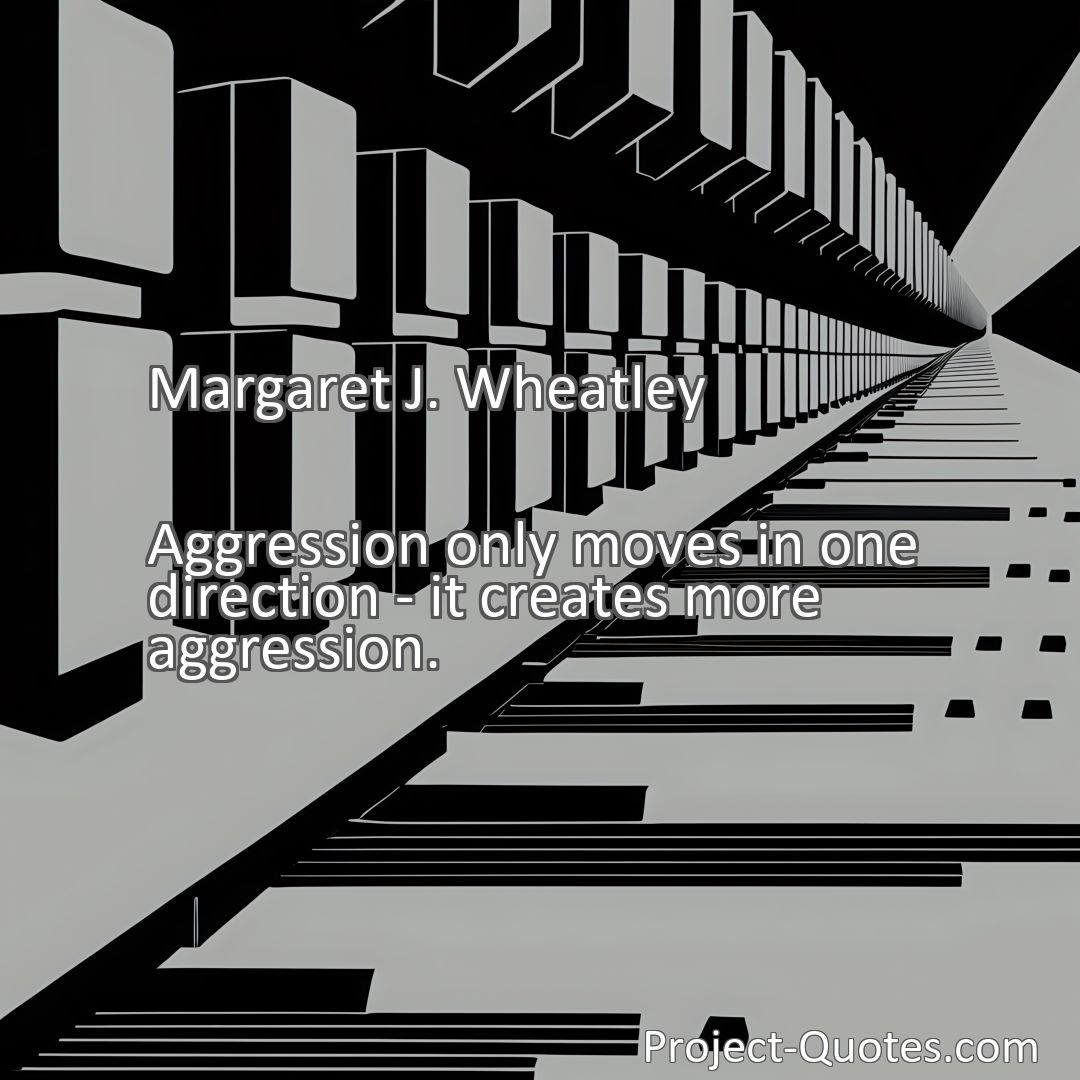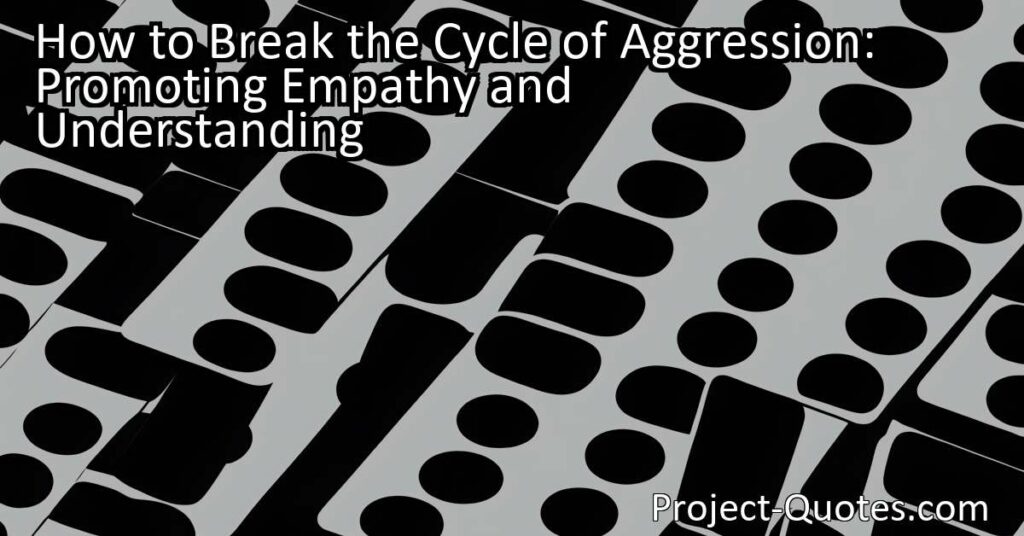Aggression only moves in one direction – it creates more aggression.
Margaret J. Wheatley
In “How to Break the Cycle of Aggression: Promoting Empathy and Understanding,” the content explores how aggression leads to more aggression when someone acts aggressively towards another person. By promoting empathy and understanding, we can counteract aggression and create a more peaceful society. Let’s strive for a world where aggression is replaced with compassion and harmony.
Table of Contents
Meaning of Quote – Aggression only moves in one direction – it creates more aggression.
Have you ever noticed how aggression seems to have a domino effect? When one person acts aggressively towards another, it often triggers a chain reaction, leading to even more aggression. This concept is beautifully captured in the quote by Margaret J. Wheatley, which suggests that aggression only moves in one direction, creating more aggression.
Aggression, as defined by many psychologists, refers to hostile or violent behavior intended to hurt someone physically or emotionally. It can manifest in various forms such as physical fights, bullying, verbal attacks, or even online harassment. Unfortunately, aggression has become all too prevalent in today’s society, and its negative consequences are far-reaching.
One way aggression begets more aggression is through retaliation. When someone acts aggressively towards another person, it is human nature to want to fight back and defend oneself. This retaliation often leads to a cycle of escalating aggression, as each party tries to outdo the other’s hostile behavior. For example, imagine two students arguing over a trivial matter. If one student resorts to name-calling, it is likely that the other will respond with more insults, thus perpetuating the aggression.
Furthermore, aggression creates a hostile environment that fosters aggression in others who witness or experience it. Think about the last time you witnessed a fight or heated argument. Did it make you feel calm and peaceful? More often than not, witnessing aggression can evoke negative emotions like fear, anger, or even a desire to join in the aggression. In a school setting, for instance, when a group of students witnesses one of their peers being bullied, they might feel compelled to join in to avoid becoming a target themselves. This not only reinforces the initial aggression but also amplifies it by involving more individuals.
Sadly, aggression can become a learned behavior. Children, especially at a young age, are highly impressionable and tend to imitate what they observe. If they are consistently exposed to aggression, whether it be in their immediate environment or through media influences, they may internalize it as an appropriate way to deal with conflict. This learned aggression can then be perpetuated in their interactions with peers, family members, and even authority figures. Consequently, the cycle of aggression continues, creating a society that values hostility over understanding and compassion.
It is essential to recognize that aggression is not an inherent characteristic of human nature. Rather, it is a response to certain conditions or circumstances. These can include personal frustration, feelings of powerlessness, cultural influences, or even societal norms that glorify aggression. Understanding the underlying causes of aggression is crucial in breaking the cycle.
Promoting empathy and understanding is one effective approach to counter aggression. Empathy involves putting ourselves in someone else’s shoes and trying to understand their feelings and experiences. By encouraging empathy, individuals can gain a deeper understanding of others’ perspectives, leading to more peaceful and constructive ways of resolving conflicts. Schools can play a vital role in fostering empathy by implementing anti-bullying programs, conflict resolution workshops, and encouraging students to express their emotions in healthy ways.
Another key factor in reducing aggression is effective communication. Often, aggressive behavior arises from misunderstandings or the inability to express oneself appropriately. Teaching young individuals the importance of active listening, assertiveness, and nonviolent communication techniques can equip them with necessary skills to address conflicts without resorting to aggression. Additionally, providing a safe space for individuals to express their concerns and grievances openly can prevent pent-up emotions from escalating into aggressive behavior.
Furthermore, it is crucial to address the root causes of aggression, such as inequality, poverty, or lack of resources. Research has shown that individuals who experience chronic stress due to these factors are more likely to engage in aggressive behavior. By working towards a more equitable society and providing individuals with the necessary support and resources, we can reduce the prevalence of aggression.
While aggression may appear to be an unstoppable force, there is hope for change. It is within our power to break the cycle of aggression by promoting empathy, effective communication, and addressing the underlying causes. Margaret J. Wheatley’s quote serves as a reminder that aggression only leads to more aggression, but through education, understanding, and compassion, we can create a world where aggression is replaced with peace and harmony. Let us strive for a society where aggression is no longer the default response but instead, understanding and empathy pave the way towards a brighter future.
I hope this quote inspired image brings you hope and peace. Share it with someone who needs it today!


